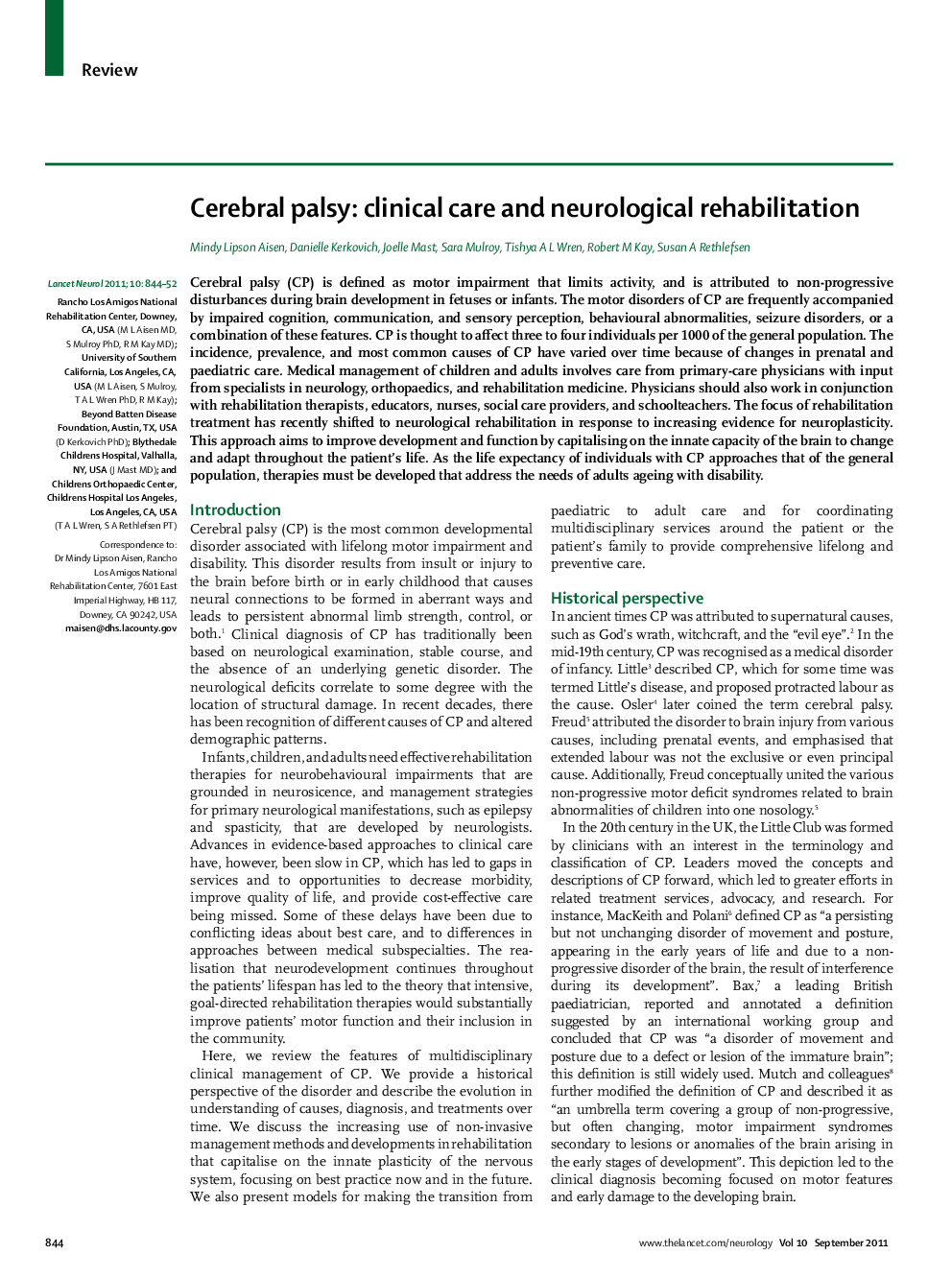| Article ID | Journal | Published Year | Pages | File Type |
|---|---|---|---|---|
| 3067165 | The Lancet Neurology | 2011 | 9 Pages |
SummaryCerebral palsy (CP) is defined as motor impairment that limits activity, and is attributed to non-progressive disturbances during brain development in fetuses or infants. The motor disorders of CP are frequently accompanied by impaired cognition, communication, and sensory perception, behavioural abnormalities, seizure disorders, or a combination of these features. CP is thought to affect three to four individuals per 1000 of the general population. The incidence, prevalence, and most common causes of CP have varied over time because of changes in prenatal and paediatric care. Medical management of children and adults involves care from primary-care physicians with input from specialists in neurology, orthopaedics, and rehabilitation medicine. Physicians should also work in conjunction with rehabilitation therapists, educators, nurses, social care providers, and schoolteachers. The focus of rehabilitation treatment has recently shifted to neurological rehabilitation in response to increasing evidence for neuroplasticity. This approach aims to improve development and function by capitalising on the innate capacity of the brain to change and adapt throughout the patient's life. As the life expectancy of individuals with CP approaches that of the general population, therapies must be developed that address the needs of adults ageing with disability.
